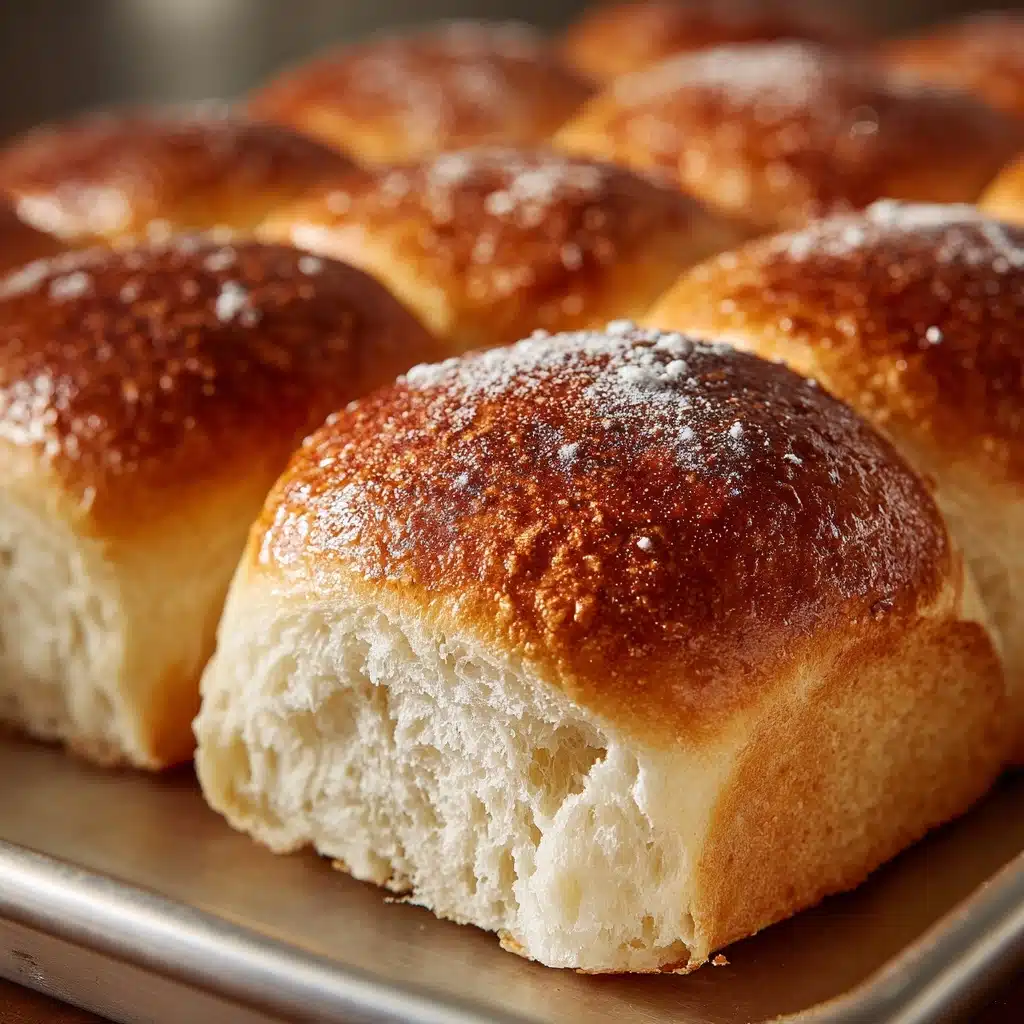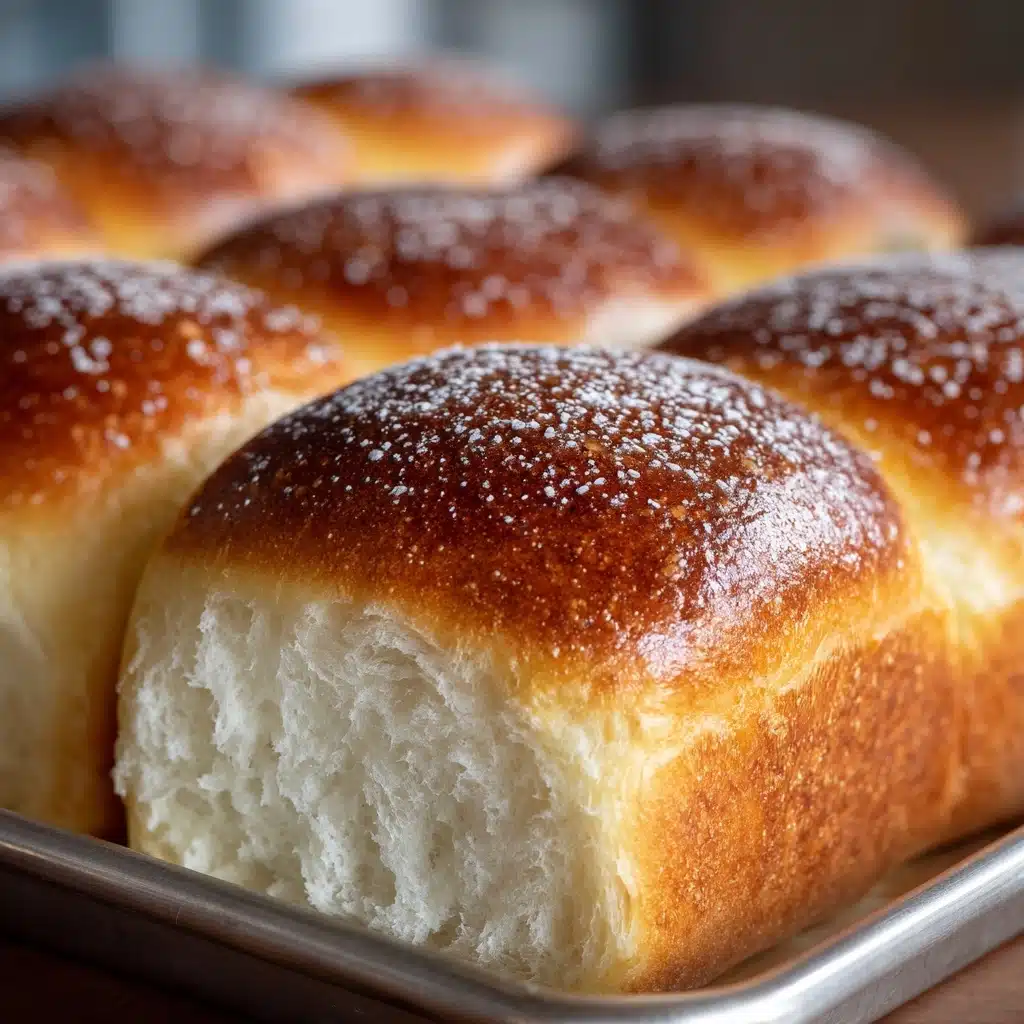There’s something magical about baking Homemade White Bread from scratch—the aroma fills your kitchen, and the first warm slice is pure comfort. This classic loaf is delightfully soft, with a golden crust and just the right amount of sweetness. Whether you’re making it for toast, sandwiches, or just to slather with butter, Homemade White Bread is a timeless recipe you’ll come back to again and again.

Ingredients You’ll Need
Making a delicious loaf of Homemade White Bread requires just a handful of pantry staples, and each ingredient plays a special role in the final result. These simple components work together to create that irresistible taste, pillowy crumb, and perfectly golden crust.
- Warm water (1 cup, about 110°F): The perfect temperature helps activate the yeast, setting the foundation for a fluffy rise.
- Active dry yeast (2 1/4 teaspoons, 1 packet): This is what makes your bread rise and gives it that beautiful, airy structure.
- Granulated sugar (2 tablespoons): A touch of sweetness feeds the yeast and enhances the flavor of your loaf.
- Unsalted butter, softened (2 tablespoons): Butter adds richness and tenderness, making the bread extra soft.
- Warm milk (1/2 cup): Milk gives a subtle creaminess and helps brown the crust for that appealing color.
- Salt (1 1/2 teaspoons): Essential for bringing out all the flavors and balancing the sweetness.
- All-purpose flour (3 1/2 to 4 cups): The backbone of your bread, providing structure and that classic white bread texture.
How to Make Homemade White Bread
Step 1: Activate the Yeast
Begin by combining your warm water, yeast, and sugar in a large bowl or the bowl of your stand mixer. Stir everything together gently and let the mixture sit for 5 to 10 minutes. You’ll know it’s ready when it becomes foamy on top—this means the yeast is awake and ready to work its magic.
Step 2: Mix the Dough
Add the softened butter, warm milk, and salt directly into the yeast mixture. Now, start adding your flour gradually—begin with 3 1/2 cups, mixing as you go. If the dough feels too sticky, sprinkle in a little more flour, just one tablespoon at a time, until it becomes soft and manageable. The goal here is a dough that’s smooth but not dry.
Step 3: Knead Until Smooth
Turn your dough out onto a floured surface, or keep it in your mixer with a dough hook attached. Knead for about 8 to 10 minutes, until it’s elastic and smooth. This step develops the gluten, which is what gives Homemade White Bread its lovely, chewy texture.
Step 4: Let the Dough Rise
Place the dough in a lightly greased bowl, turning it once so both sides are coated. Cover the bowl with a towel or plastic wrap and let it rise in a warm spot. In about 1 to 1 1/2 hours, the dough should double in size and look puffy and light.
Step 5: Shape and Second Rise
Punch down the dough to release excess air, then shape it gently into a loaf. Place it in a greased 9×5-inch loaf pan, cover again, and let it rise for another 30 to 45 minutes. You’ll know it’s ready when the dough has risen just above the rim of the pan.
Step 6: Bake to Golden Perfection
Preheat your oven to 375°F (190°C) while the bread finishes its second rise. Bake the loaf for 30 to 35 minutes, until the top is golden and the bread sounds hollow when tapped. That’s the sign you’ve got a perfectly baked Homemade White Bread!
Step 7: Cool and Enjoy
Let the bread cool in the pan for about 10 minutes, then transfer it to a wire rack. Resist slicing immediately—letting it cool completely will help each slice hold together beautifully. If you love a soft crust, brush the top with melted butter while it’s still warm.
How to Serve Homemade White Bread

Garnishes
Freshly baked Homemade White Bread needs little more than a swipe of soft butter, but you can get creative! Try a sprinkle of flaky sea salt, a drizzle of honey, or even a dusting of cinnamon sugar for breakfast. For a savory touch, rub the crust with a cut garlic clove or layer with your favorite cheese.
Side Dishes
This bread shines next to almost anything, from hearty soups and stews to crisp salads or scrambled eggs. Serve slices alongside a bowl of tomato soup for classic comfort, or pair with a fresh garden salad to make any meal feel special.
Creative Ways to Present
Homemade White Bread makes a beautiful centerpiece when sliced and arranged in a basket lined with a colorful cloth. Try cutting the loaf into thick cubes for homemade croutons, or use cookie cutters to make fun shapes for a kid-friendly snack board. Toasted slices also make a charming base for open-faced sandwiches or bruschetta.
Make Ahead and Storage
Storing Leftovers
Keep your Homemade White Bread fresh by storing it in an airtight bag or bread box at room temperature. It will stay soft and delicious for up to 3 days—just be sure to keep it away from direct sunlight or heat to avoid drying out.
Freezing
If you want to make your loaf last even longer, Homemade White Bread freezes beautifully. Slice the bread first, then stack the slices in a freezer-safe bag. Squeeze out excess air, seal tight, and freeze for up to 3 months. Whenever you need a slice or two, just pop them straight in the toaster or let them thaw at room temperature.
Reheating
For that just-baked experience, warm slices in a toaster or wrap them in foil and heat in a 300°F oven for 5 to 10 minutes. You’ll revive the bread’s fresh flavor and soft texture in no time—perfect for breakfast toast or an afternoon snack.
FAQs
Can I use instant yeast instead of active dry yeast?
Yes, you can swap instant yeast for active dry yeast in this recipe. Just mix it directly into the flour without blooming in water first, and keep an eye on the dough as it may rise a bit faster.
Why is my bread not rising?
This usually happens if your yeast is old or the water was too hot or too cold. Always check that your yeast is fresh and that your water is around 110°F to give the yeast the best environment to grow.
How do I know when my dough has risen enough?
The dough should double in size during the first rise. A gentle poke with your finger should leave a slight indentation that slowly springs back—this means it’s ready for the next step.
Can I make Homemade White Bread without a stand mixer?
Absolutely! Just mix and knead the dough by hand on a floured surface. It might take a few extra minutes, but it’s a great workout and very satisfying to do from start to finish.
Is it possible to make this recipe vegan?
Yes! Substitute the butter with a plant-based alternative and use a non-dairy milk of your choice. The bread will still turn out soft and delicious.
Final Thoughts
Baking Homemade White Bread is truly rewarding, filling your home with warmth and your table with something special. Give it a try and watch how quickly it disappears—there’s nothing quite like sharing a loaf you made with your own hands!
